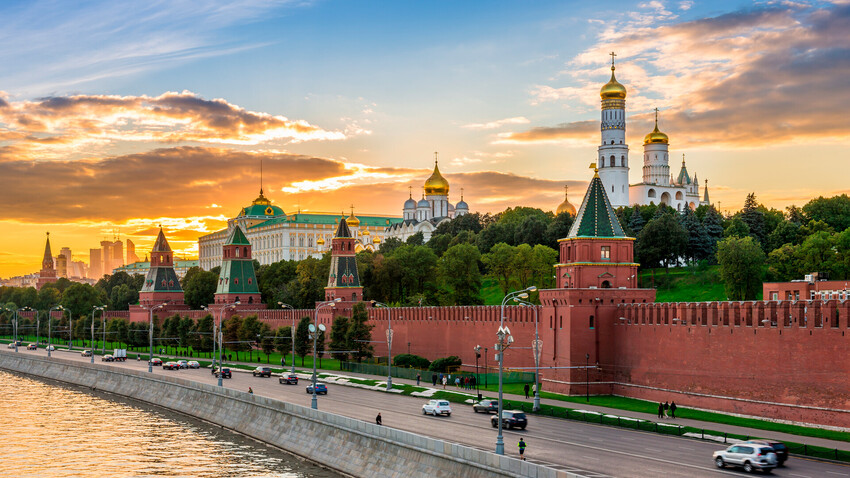
From afar, the Moscow Kremlin looks pompous and majestic: with its towers with red stars, its “swallow’s tail” merlons, its ancient brickwork – bright red, just as new.
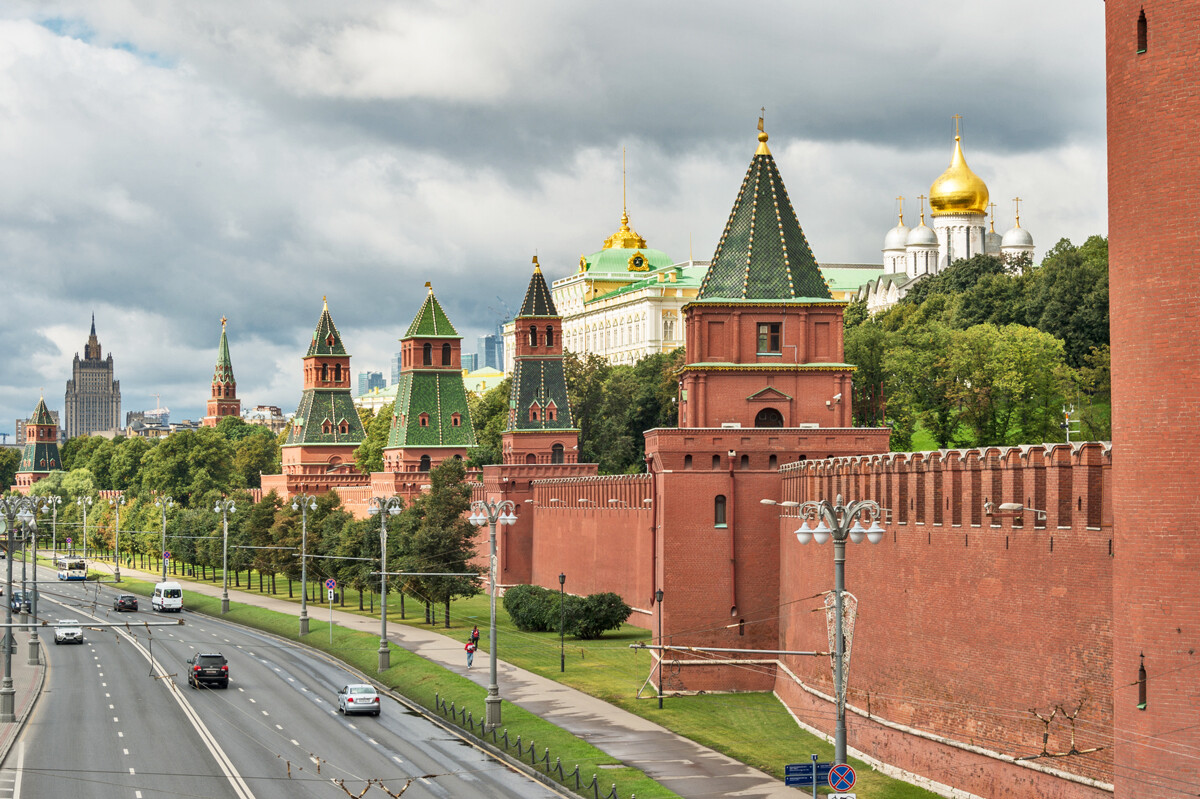
We approach the historic walls – and still the brickwork seems perfectly preserved. Red and even, not a single brick bulges out from the even brick rows.
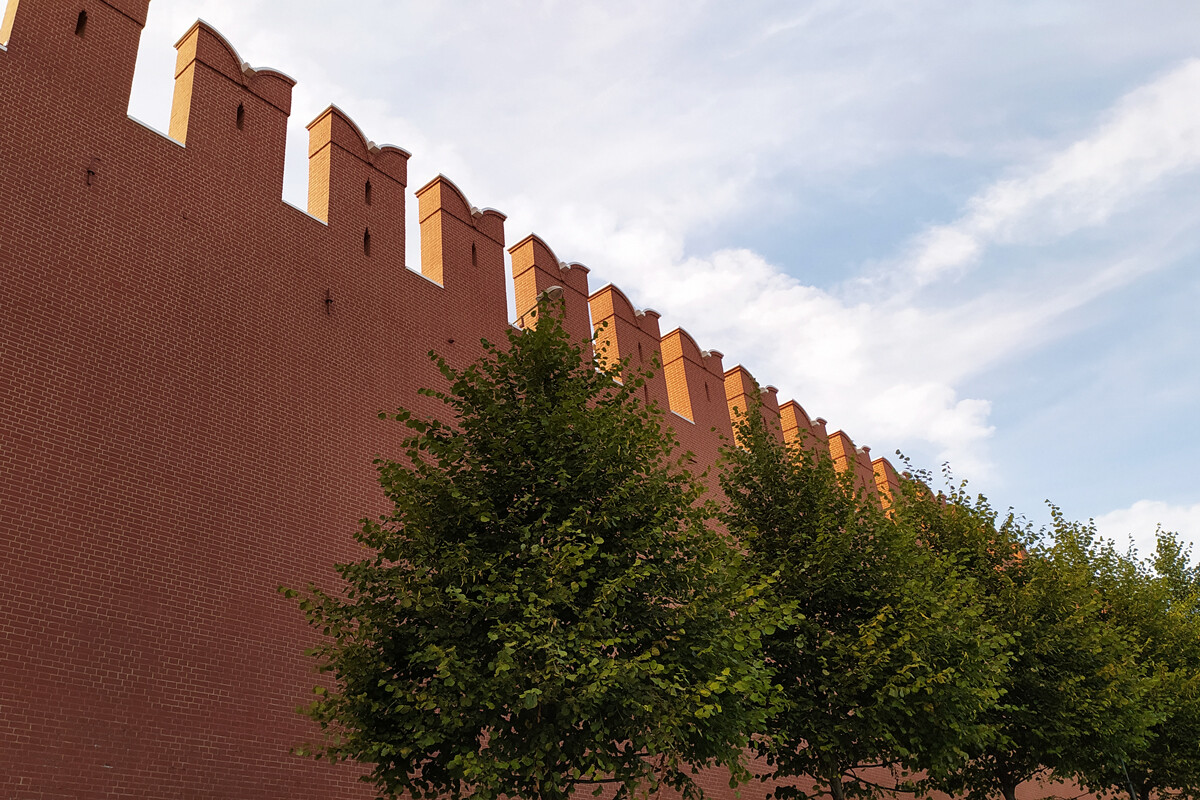
We come even closer and we see… that the bricks on the famous Moscow Kremlin wall are… literally painted on! The red bricks and the grayish-white binding paste are nothing more than even lines drawn on a solid relief surface similar to plaster.
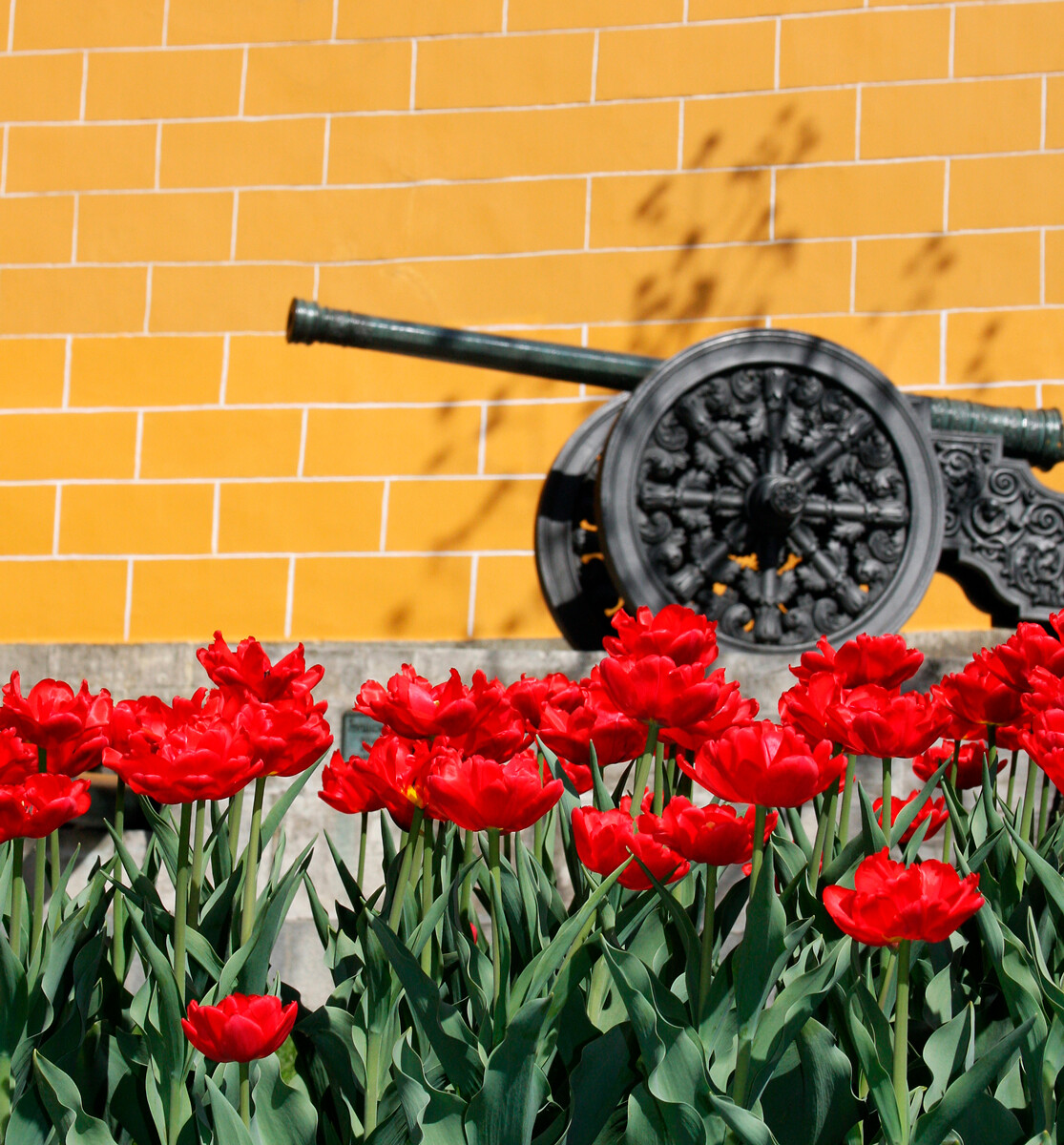
Wait, what!? Someone is painting bricks on the Moscow Kremlin wall? Yes, regularly, since the paint has a tendency of fading. There’s no big secret in that – photos are spread on the internet of workers who paint brickwork onto the walls in daylight.
Рабочие рисуют кирпичи на кремлевской стене #постмодернизмpic.twitter.com/CWh1Z8Tk7L
— Pavel Pryanikov (@netovetz) May 1, 2016
In reality, the Moscow Kremlin wall is, of course, made of brick. However, the majority of its outer parts are covered with plaster and painted, with bricks drawn by hand. Such a practice of painting the Moscow Kremlin has existed for a long while and, depending on the era and the century, it had different features.
The Moscow Kremlin wall was built by Italians at the end of the 15 century, under Ivan III. First of all, the fortress served as a fortification – protecting from constant invasions and wars. It had the natural color of red bricks and no one had any idea to change it right until 1680. First of all, for security reasons: if a cannonball hit the wall, the whitewash crumbled, baring red brickwork – a vulnerable spot to aim for further.
But, in 1680, the first documentary evidence emerged that the Moscow Kremlin was painted white.
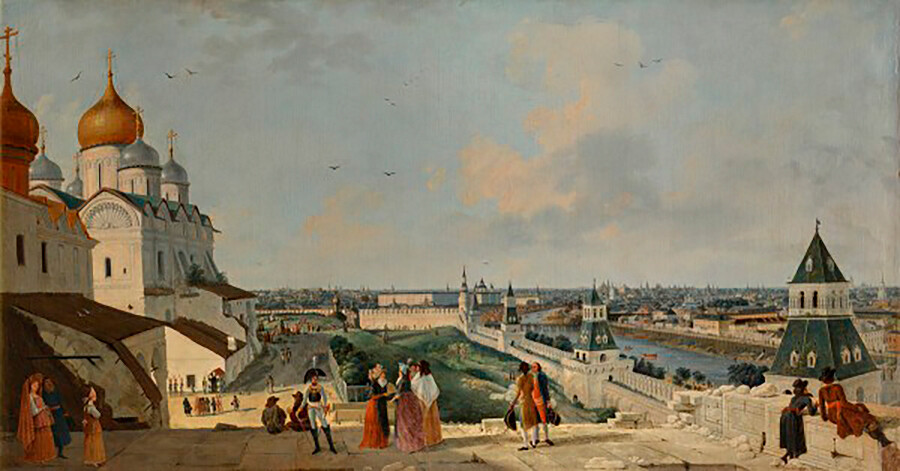
View of Moscow from the balcony of the Kremlin Palace towards the Moskvoretsky Bridge, 1797, J. Delabart
Russian Museum/Public DomainHistorian Bartenev in the book ‘The Moscow Kremlin in old times and now’ writes how, in a memorandum sent to the tsar on July 7, 1680, a question was askede: “Should we whitewash the walls of the Kremlin, leave them as is or paint them ‘brick-like’ like the Spasskaya Gate?” Back then, the Moscow Kremlin walls and towers lost their fortification value and they were whitewashed with lime. Practically, it was a political statement: Moscow was not afraid of invasions, the Mongol-Tatar yoke or anyone else anymore. At the time, many other Russian kremlins were also whitened – the Rostov Kremlin, the Novgorod Kremlin, the Kazan Kremlin, etc.
After that, the Moscow Kremlin was painted white for several more centuries. Napoleon, when he attacked Moscow in 1812, saw the Moscow Kremlin white. After it was burned down, it was restored and painted white again. Only separate towers were not always white – the Spasskaya Tower, the Nikolskaya Tower and the Troitskaya Tower: sometimes they were left red or painted red-and-white for decorative purposes.

Moscow. View of the Kremlin from the Sophia embankment. 1879, Peter Vereshchagin
Yaroslavl Art Museum/Public DomainThe Moscow Kremlin entered the beginning of the 20 century, according to writer Pavel Ettinger, with “noble city patina”: sometimes, it was painted white for significant events, but, the majority of time, the citadel stood patchy and with streaks, with red brick “ulcers”. Although, it barely concerned anyone.
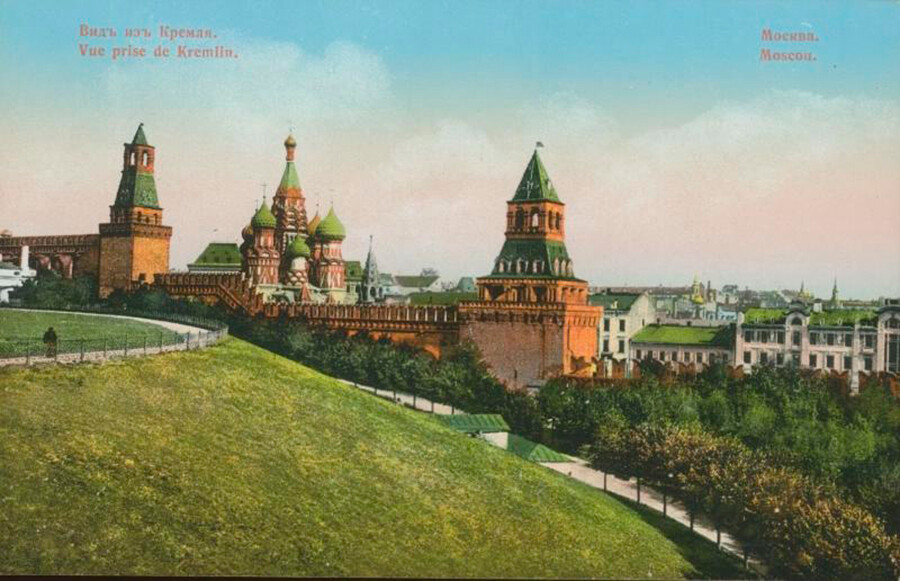
View from the Kremlin, 1880 - 1897
Joint Stock Company "Granberg in Stockholm"/MAMM/MDF/Russia in photoThe Moscow Kremlin was radically re-painted during World War II, which was a forced decision. To be precise, it had to be hidden literally: camouflaged in such a way that, to a German bomber, it would look like a regular city quarter. Then, according to the most complex project of academic Boris Iofan, house walls and the black holes of windows were painted on the white Moscow Kremlin walls; artificial streets were built on the Red Square and Lenin’s Mausoleum was covered with plywood with an image of a regular mansion. The camouflage worked: the Moscow Kremlin “disappeared” and became invisible from the air.
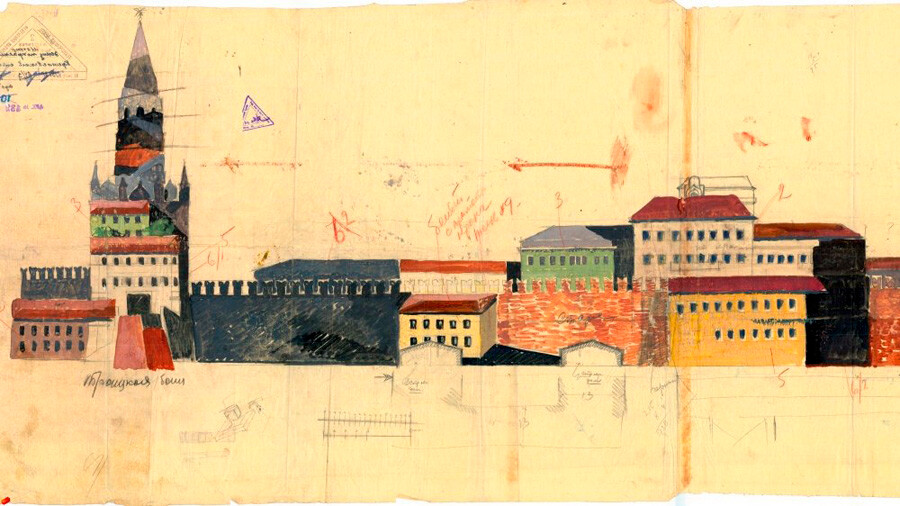
The project of the deception of the Kremlin buildings by Boris Iofan
Public DomainRead more:How the Russians made the Kremlin 'disappear' during WWII
But, after the war, the fortress needed a massive reconstruction. And the celebration of the 800-year anniversary of Moscow was approaching. Such a reconstruction followed in 1946-1950. Dilapidated stone and brick details were replaced by new ones, although made after the samples from the 17-19 centuries. Nevertheless, the historic brickwork and its later additions were once more scrupulously supplemented along its entire two-kilometer-long perimeter with new bricks, manufactured in the USSR during this period. At the same time, by Stalin’s decision, the Moscow Kremlin and its wall was repainted with the ideologically-dear-to-the-communists red color.
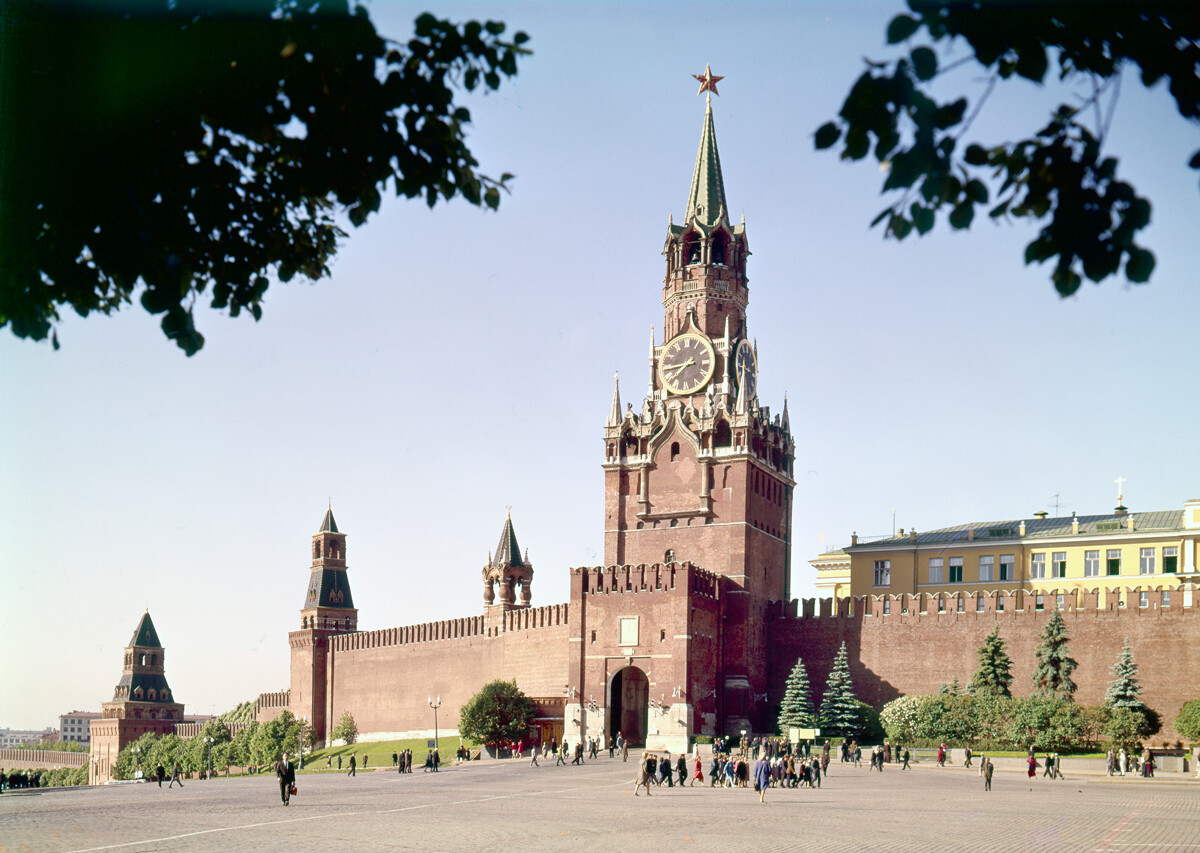
Kremlin wall, 1967
Lev Ustinov/SputnikSince then, the wall has been restored multiple times, with some of its parts rebuilt from the ground up. Such work is always underway. “A whole range of factors continues to impact the Moscow Kremlin walls negatively. We live under the conditions of the Russian winter. The water that seeps into the pores of the bricks damages its outer part,” Sergei Devyatov, Doctor of Historical Sciences and the adviser to the director of the Federal Protective Service of Russia, explains.
At the end of the 1990s, according to him, the brickwork was in a bad state and it was preserved with a special solution – it protects the bricks from atmospheric precipitation, the external environment and exposure to paint.
Nevertheless, it’s still important that the Moscow Kremlin wall keeps a “presentable look”. That’s why, these days, the walls are painted with a matte red paint every now and then, to keep its brick-red color always looking saturated.
If using any of Russia Beyond's content, partly or in full, always provide an active hyperlink to the original material.
Subscribe
to our newsletter!
Get the week's best stories straight to your inbox